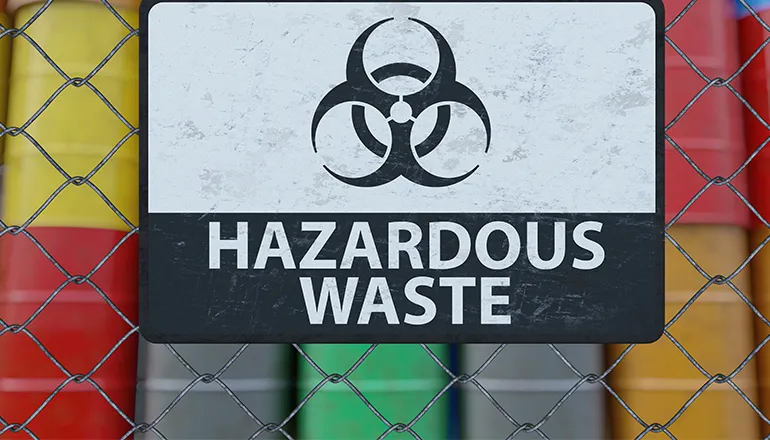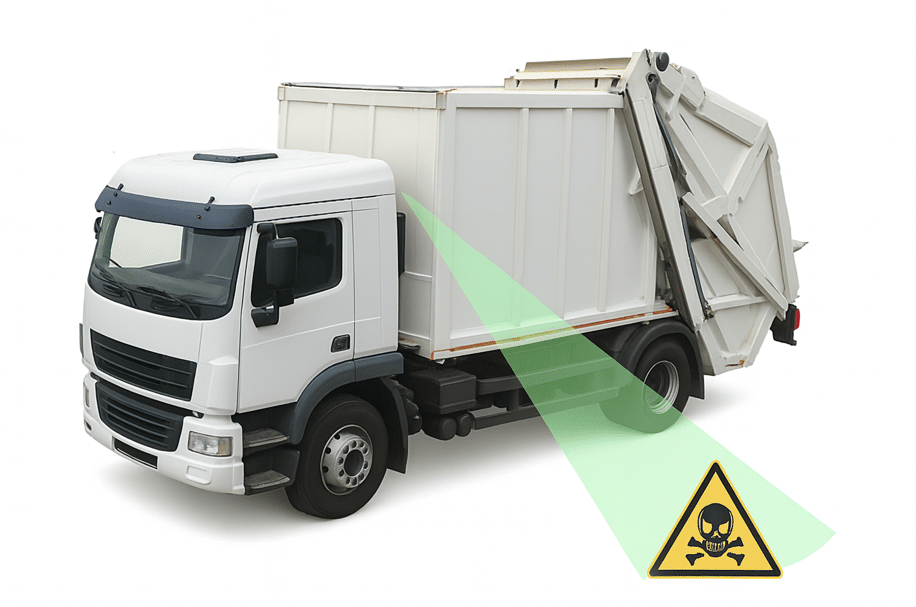Waste & material traceability solution for sustainable facilities

Hazardous waste management represents one of the most complex and critical aspects of waste operations. Regulatory violations can result in severe penalties, environmental damage, and safety risks. With enforcement becoming more rigorous, waste management companies must adopt systems that ensure hazardous waste compliance while protecting both workers and the environment. In today’s regulated landscape, digital transformation is no longer optional—it’s essential.
In the European Union, hazardous waste is regulated under the EU Waste Framework Directive (2008/98/EC, amended by 2018/851 and the 2025 revision), complemented by national laws in each Member State. Waste operators must comply with requirements for classification, storage, transport, and treatment, while also following ADR rules for the transport of dangerous goods.
The consequences of failing to comply are significant. Fines for violations can run into millions, while operators may face license suspensions, liability for environmental damage, or even criminal charges. Worker safety is also at stake: improper handling and storage of hazardous materials can cause illness, injury, or fatalities, creating both legal and ethical obligations.
Environmental liability adds another dimension, with companies often responsible for decades of cleanup at contaminated sites. With new materials being classified as hazardous and stricter standards introduced under the EU’s circular economy and Extended Producer Responsibility (EPR) policies, operators must stay ahead while maintaining complete, verifiable documentation.
Hazardous waste compliance in the EU spans the entire lifecycle from generation to disposal. Operators must properly characterize wastes under EURAL codes, store them in compliant containers with correct labeling and maximum accumulation times, and ensure detailed documentation for every movement.
Transport must be handled by licensed carriers, with cradle-to-grave manifests and ADR compliance at every stage. Even after waste leaves a site, the original holder retains liability, making due diligence on treatment and disposal facilities critical.
Regular reporting to national authorities is also required, covering volumes, destinations, and treatment methods. Manual tracking often leads to data fragmentation, recordkeeping errors, and compliance risks that expose operators to penalties.
Traditional compliance methods—paper manifests, manual reporting, and fragmented recordkeeping—leave waste operators exposed to errors, delays, and fines. In hazardous waste, those gaps can translate into serious safety risks, environmental liability, and costly cleanups.
Digitalization closes these gaps by ensuring that hazardous items are detected, logged, and acted on in real time. Instead of depending solely on manual observation, operators gain automated visibility into high-risk incidents that could otherwise go unnoticed until it’s too late.
This shift from reactive paperwork to proactive monitoring creates safer, more resilient operations—reducing accidents, improving accountability, and giving operators confidence that cradle-to-grave obligations are being met.

EvrekaAI brings artificial intelligence to hazardous waste management by focusing on real-time detection and prevention of high-risk incidents. Rather than relying on manual observation, the system uses AI-powered dashcams and sensors to identify dangerous situations during daily operations.
With these features, EvrekaAI enables European waste operators to protect workers, maintain compliance, and respond to risks faster than ever before.
For waste management companies, hazardous waste compliance is not just about ticking boxes for regulators—it’s about ensuring operational continuity and keeping workers safe. EvrekaAI strengthens day-to-day collection and transport by turning detection data into actionable insights.
By mapping hotspots of illegal dumping and hazardous items, operators can deploy crews more strategically, reduce unnecessary trips, and prevent recurring issues. Audit-ready evidence — including geolocation, images, and timestamps — simplifies inspections and reduces disputes. These tools cut cleanup costs while ensuring cradle-to-grave accountability.
Analytics further support continuous improvement. Managers can track recurring risks such as nitrous oxide cylinders, identify problem areas across routes, and optimize resources. This intelligence helps operators focus training on recurring hazards, allocate resources to high-risk areas, and continuously improve hazardous waste handling practices.
As hazardous waste regulations continue to evolve under EU directives and national frameworks, EvrekaAI is built to adapt. Its scalable architecture means operators can manage growing waste volumes, integrate new detection features, and expand coverage without disruption. The platform evolves with industry needs, ensuring compliance and safety remain under control as operations scale.
Hazardous waste compliance is one of the most demanding challenges waste operators face in the EU. The risks extend far beyond fines to include worker safety, environmental liability, and long-term reputation.
EvrekaAI equips waste companies with automation, real-time insights, and safety management capabilities to stay compliant while protecting both people and the environment.
Request a demo discover how EvrekaAI can enhance your hazardous waste compliance and safety management capabilities.
Learn more about our complete range of intelligent waste management solutions and explore how leading organizations are achieving compliance excellence with Evreka’s proven platform.